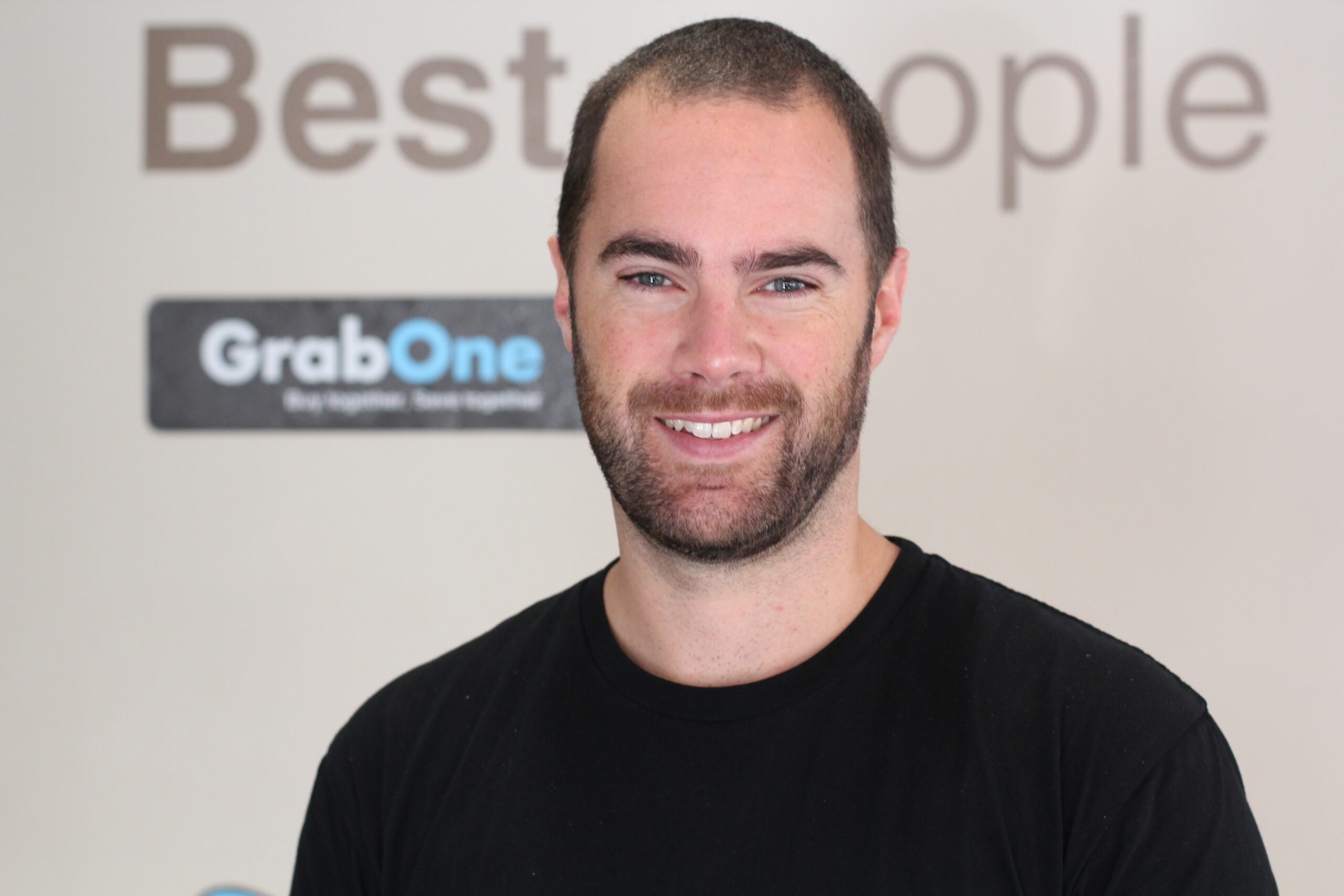Shifting gears
Total cost transparency, improved reporting and a wider service offering to put company administrators at ease with their balance sheets – these are just some of the latest trends impacting the company vehicle leasing space. Glenn Baker reports.
Total cost transparency, improved reporting and a wider service offering to put company administrators at ease with their balance sheets – these are just some of the latest trends impacting the company vehicle leasing space. Glenn Baker reports.
No matter if you have just a handful of company vehicles, or can fill a whole parking lot, the pressure’s greater than ever to find new efficiencies and new savings as the cost of procuring, leasing and maintaining company cars, vans and trucks continues to rise.
If it’s your job to manage company vehicles, it’s your job to constantly review the market and the trends that are impacting it.
Vern McLaren, national customer service manager at FleetPartners, says access to data is now increasingly important for managing costs; and telematics solutions are being deployed to provide a data feed (‘telematics’ is a way of monitoring the location, movements, status and behaviour of a vehicle or fleet of vehicles).
The use of technology comes at a cost he says, although that cost is reducing as research and development, together with hardware costs, come down.
“FleetPartners are well placed to provide this level of service to customers through collection, interrogation and reporting to meet customers’ expectations,” he says.
Innovative technologies like the growing array of fuel and powertrain technologies, the wide range of battery and component technologies including lightweight materials, and the expectation that advanced on-board electronic systems will provide connectivity to personal devices, is making the pace of change increasingly more rapid, he adds.
“This is presenting a major challenge to OEMs and suppliers; how to achieve substantial returns on growing investment when accelerating technological advances are making innovations obsolete in increasingly short periods of time?
“The people who service these vehicles locally also need to keep up with technologies,” he says. “This is not just a leasing industry issue however; as a purchaser of a large volume of new vehicles we see it becomes evident early in a vehicle’s life.”
Driving down vehicle fleet management costs means that outsourcing to an external fleet manager like FleetPartners is becoming steadily more prevalent, adds McLaren. “We can pass on economies of scale.”
Charles Willmer, MD of LeasePlan New Zealand has seen many changes and challenges in the fleet leasing market during his 26 years with the firm. In recent times he’s noticed the impact that New Zealand’s used car market, with its higher prices, has had on the ‘Total Cost of Vehicle Ownership models, and therefore the monthly rates being asked in the leasing market.
“This situation makes leasing new vehicles more attractive, but it will be interesting to see how things pan out in the next year or two.”
Willmer says the impact of reduced imported used vehicle supply impacts up the different tiers of the car market in this country. Used import volumes out of Japan have been running at about half of what they were four years ago, although he is seeing early signs of the numbers picking again. “The effect this will have,” says Willmer, “will be to reduce the used car price thus increasing the cost of running a fleet for both lease and ownership models.”
He says the reason for getting into a vehicle lease has also changed. These days it’s more about the issue of handing over management control to a third party – let them manage everything while you get on with running your business.
“People don’t like surprises,” says Willmer. “A managed system gives them a much better picture of the overall cost of running their vehicles. It’s easy for budgeting, and it means that somebody else is handling all the risk.”
Legislation alert
It’s been a relatively quiet year in terms of new legislation impacting on the management and leasing of company vehicles. However, Vern McLaren offers a caution relating to the Road User Charges (RUC) Act 2012 that came into force on August 1 last year. “Any vehicle that is presented for a WOF or stopped by an enforcement officer with expired RUCs has their odometer information sent directly to NZTA.
“Once this information is received, NZTA issues RUCs up to the current odometer reading and invoices the registered entity. It is important for drivers to be aware that although this enables them to drive away, the RUCs will be due again and should be purchased immediately in advance.
“If unpaid, compounding penalties of ten percent per month are added. This has caught out a number of individuals and companies,” says McLaren. He says FleetPartners provides a RUC management service to assist customers avoid exposure to these additional costs.
Imminent reforms to the WOF and COF regime, while not impacting on leases, are expected to benefit those fleet buyers in the future who maintain modern fleets and turn over their vehicles in accordance with best practice (that is, three to four years and 60-80,000 kilometres for passenger class vehicles).
Looking further out, Charles Willmer says proposed changes to the International Accounting Standards will certainly impact on the vehicle leasing market. The changes will address the different accounting rules that apply to finance leases and operating leases (with a finance lease, payments are capitalised on the balance sheet, whereas with an operating lease, they’re kept off the balance sheet).
“The proposals to change the way the leases are accounted for are out there, but at the moment it’s hard to predict the impact these changes will have,” says Willmer. “The new rules should be known later this year.” His message is to ‘watch this space’ and meantime, carefully assess the reasons why you’ve chosen the type of lease you have and ensure your lease company is all over the new regulations when they come out.
Greater transparency
Ask the major leasing companies about their latest market initiatives and the word ‘transparency’ crops up repeatedly. Improved transparency, particularly on costs, seems to be the order of the day. It’s all about keeping the client better informed, says Willmer. “So they know exactly how their monthly lease fee is made up, and therefore, how each cost can be allocated.”
Jack Gordon-Crosby, MD sales for OptiFleet, says one of their biggest value propositions for clients is their transparent lifecycle cost model which allows a client to compare the total costs of owning or leasing any vehicle over a set term and distance. “We are continuing to invest in the development of this model and the process for capturing current market data, so clients can see at a glance which vehicles are the best match for their fit-for-purpose specifications and budgets.”
A broader range of services from the providers is aimed at further removing any fleet management concerns from a client’s desk. “For example, vehicle drivers can now call us direct if they ever require a new fuel card,” says LeasePlan’s Willmer.
Over at FleetPartners recent new offerings include EzyDrive (late model vehicles returned off lease early which provide low lease rates and reduced FBT costs), EzyService (a free pick and delivery servicing offer with mini-groom), and a new finance lease with managed services.
Improved reporting offerings are the third big trend in this market space. In the case of LeasePlan, for example, there’s improved FBT reporting to help minimise FBT payments through claiming the days a vehicle is not used for business (like those days it was parked up at the airport). “It’s about capturing information more efficiently,” says Willmer.
FleetPartners has an enhanced fleet reporting suite. “Ensuring that fleet costs are being further scrutinised and benchmarked; with the key being the suggested course of action post analysis of the fleet reports,” explains McLaren.
ORIX New Zealand, meanwhile, is excited about its new product development, which migrated over from its Australian operation.
“Novated Leasing grew out of the trend for companies to ‘cash up’ the company supplied vehicle for discretionary (non tool-of-trade) drivers within company fleets, with the primary aim of moving the responsibility and financial risk associated with a vehicle back onto the individual employee,” explains ORIX New Zealand’s sales manager Nigel Bell-Booth. “The employee was generally compensated for the loss of a fully maintained company vehicle by way of salary adjustment; however, due to the inherent cost and tax advantages of leasing, employees were generally negatively impacted by the move when it came to purchasing and running an equivalent vehicle out of their post tax salary.
“Novated Leasing allows employers to continue to offer the same benefits of a company supplied vehicle, but with none of the financial risks or obligations present in a traditional company lease or ownership model. It transfers the risk of the vehicle lease to the employee, allowing them the benefit of selecting a vehicle of their choice, while running the lease itself through the company by way of a pre-PAYE salary deduction. This takes full advantage of the salary packaging benefits for PAYE and GST deductions, as well as the considerable procurement benefits offered by ORIX, while placing the residual responsibility with the employee and thus avoiding any disposal or reallocation risk if the staff member moves on,” says Bell-Booth.
“As no additional costs are borne by the business and all vehicle costs are deducted automatically from the individual driver’s salary, the Novated product is not only suitable for company discretionary drivers, but for anyone within the organisation who wants to sacrifice a portion of their salary for the provision of a new or near new vehicle.”
Leaner and greener
New Zealand’s vehicle leasing and management industry thrives on solid long-term relationships between the service provider and the client, and to maintain customer loyalty it’s vital that the leasing firms demonstrate ways of reducing the costs of running a fleet. That might mean supporting a reduction in the number of vehicles being leased, suggests Willmer, and this is where better reporting comes into play.
“Analysing vehicle utilisation through solid information is one way to help. We might be able to identify say ten vehicles that are travelling less than 15,000 kilometres a year, and therefore support a plan where by combining employee work roles it’s possible to halve the fleet number.”
The move towards greater social responsibility and business sustainability is also having a major impact on the types of vehicles companies now choose to lease. Therefore companies may only accept AMCAP five-star safety rated vehicles, or hybrid models, vehicles that must meet certain CO2 or fuel consumption figures, or, increasingly, since the price of petrol hit the two-dollar per litre mark in 2006, restricted engine sizes.
Without doubt, buying patterns have changed in a major way and the greening of fleets continues at pace. OptiFleet’s Jack Gordon-Crosby says many New Zealand vehicle fleets are riddled with old and inefficient technology, which makes them not only detrimental to the environment, but unsafe and expensive to run.
“However, the introduction of GPS technology has increased visibility of the usage of company assets 24/7; enabling the owner to truly understand the requirement for transport in the field,” he says. “Downsizing is a trend on the rise – although in some instances upsizing is required to meet identified requirements.”
Gordon-Crosby says large cars with big c.c’s under the hood for fleet and reps usage are a thing of the past. “Fleet operators do not have to sacrifice power to be more efficient. Vehicle manufactures are investing heavily in vehicle engine and drive-train technology to achieve more power from less cc’s and more gears.
“A client also does not have to buy an electric car or invest in hybrid technology to go green. Super fuel efficiency is being achieved by smart diesel and petrol fuel pump and injector technology, supported by computers, turbos and superchargers,” he says.
Overall, ORIX’s Bell-Booth believes the reduction strategies employed to save dollars when times were tough have also resulted in a much leaner, more fuel efficient company car park for many forward thinking organisations.
“With improving financial performance, ORIX has noticed a relaxation in the strict cost controls put in place by many companies,” he says. “While achieving best value for money is definitely still a top priority, companies are looking to retain the high fuel efficiency/low operating costs of their fleet, while selecting vehicles that will provide enhanced perceived employment benefits as staff retention and a company’s ‘green’ ecological profile become more important.
“The growing popularity of compact SUVs are a perfect example of great value, fuel efficient, and highly practical vehicles that achieve these financial, efficiency, and driver engagement targets for many companies.”
Going forward, Vern McLaren sees leasing continuing to be the preferred method of funding and managing company vehicles for firms of all sizes.
“We see a growing demand for fleet management services – companies that still own [vehicles] that want to reduce fixed overhead costs and access professional independent advice, as well as discounted pricing for services like maintenance and other vehicle related expenses.
“We see the trend very much towards one of fleet consultancy which in time, with the aid of on-going GPS technology, may even reach into logistical management as well.”
Glenn Baker is editor of NZBusiness.
Advice from the wise
If the time has come to seriously get moving on vehicles for your business, here are some tips from the experts.
OptiFleet’s Jack Gordon-Crosby says it’s largely about understanding end user requirements. “Try to separate ‘need’ from ‘want’ when interviewing drivers. Develop fit-for-purpose specifications that consider important factors like: the locations they’ll travel to, road surfaces travelled on, likely weather conditions, load requirements, power requirements, safety requirements, and so on.
“Source vehicles that match the desired specifications and ensure you have a full and transparent understanding of the lifecycle costs of ownership and leasing prior to sourcing,” he adds. “Don’t be fooled into buying vehicles based on transaction price alone.”
Gordon-Crosby also recommends investing in GPS technology to ‘map and track’ daily vehicle utilisation and transparency. And invest in management tools, either in house or outsourced, to ensure a cost effective and compliant fleet.
“Preserve your funding lines for investment and working capital in the business by funding depreciating assets like motor vehicles through us,” says FleetPartners’ Vern McLaren. “Under a fully maintained operating lease there are many additional benefits which can include fixed cost monthly budgeting and daily management of the fleet for scheduled servicing and maintenance, relicensing, accident management, fuel card, relief vehicles and tyre replacement. All of which avoids the addition of fixed overhead costs in a small business.”
LeasePlan’s Charles Willmer advises focusing on the back end of a lease arrangement. What exactly are you getting into? What’s your exposure at the end of a lease regarding exceeding the agreed kilometre limit and condition of the vehicle? What happens if you hand the vehicle back early? You must make sure the offer is very clear he says.
You could, as an example, have two identical three-year-old, 60,000k company cars, but one has been driven by a heavy smoker, the other babied by a female salesperson. There could be $2,000-$3,000 difference in value of those vehicles at the end of a three year lease term. How will that affect the overall total cost of ownership? It’s all good food for thought.






